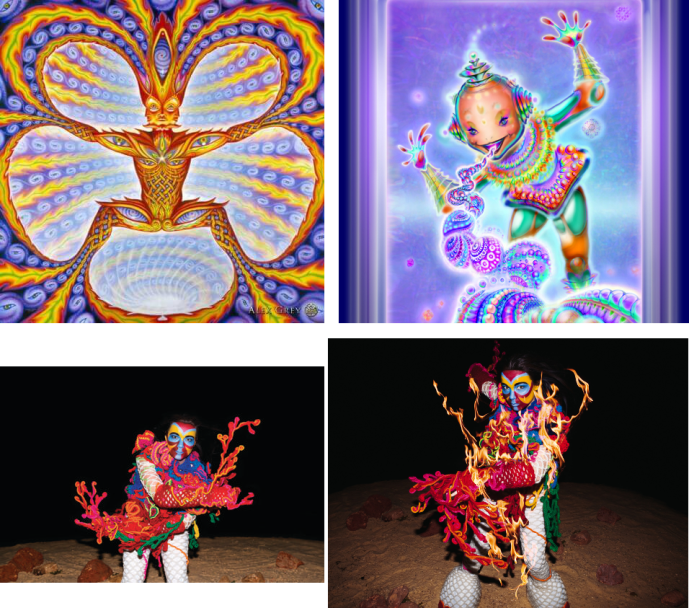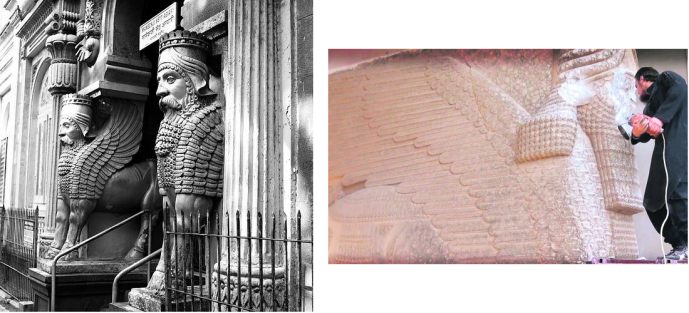“There is some sort of solution to the situation today in the world that is above and beyond religion. I had this dream that a tsunami of people would take over the justice in the world. So there is this kind-of naive hope that there is some sort of balance gonna be.. you know all these billions that are starving and then the billions being spent on warfare.. maybe we just have to drop this idea that we can actually separate us from nature, and be these kind-of perfect humans… I’m not so sure that it’s such a good idea and we just have to accept that we are a human tribe and we can unite in some sort of a global beat.” [1]
“I mean, the human race, we are a tribe, let’s face it, and let’s stop all this religious bullshit. I think everybody, or at least a lot of my friends, are just so exhausted with this whole self-importance of religious people. Just drop it. We’re all fucking animals, so let’s just make some universal tribal beat. We’re pagan. Let’s just march.” [2]
-Björk (2007)
The ancient Voodoo of West Africa has been revived by Björk to remind us of a time of general harmony and sacred connection between human beings and Mother Earth. Ten thousand years ago, before the monotheistic religions and patriarchy hijacked humanity, there was a strong general bond between people and their environment. This is reflected in the very name ‘Voodoo’, which is derived from the African word ‘Vodun’ meaning ‘spirit’.. not God, but spirit. This is an important distinction to make.

Vodun Bocio sculptures, similar to the shadowed dancers in the Earth Intruders video. They represent the forces in the spiritual realm which directly affect the physical world of nature.
Rather than spending energy on becoming closer to God (thus separating themselves from the natural world) as seen in the dominant Abrahamic religions of today, these ancient people accepted that God was unreachable and unknowable. They didn’t seek to understand the mystery of God, who he/she was, or even how humans came into existence. There was no prayer offered to God, only service offered to the intermediaries.. the spirits who control all aspects of the natural world.. that is, the world that matters to humans. Instead of worshiping their supreme creator, they placed the highest importance on these intermediary spirits known as the Loa. Shamans in these ancient tribes understood that the Loa, through ceremonial dance and other rituals, could take possession of their bodies for short periods of time, during which great wisdom could be communicated to the rest of the tribe.
Earth Intruders recaptures the wisdom of these ancient people with respect to Loa and the spiritual realm. From its universal, tribal beat to its sloshing-water sound effects, it is certainly one of the stand-out pieces on the Volta album. It touches on the fractured/schizophrenic nature of modern humanity, describing it as a “beast with many heads” that is steamrolling over the Earth creating unnecessary turmoil and imbalance. As Björk noted above, modern people are lost in their efforts to become something that is beyond human and separate from the environment. In trying to differentiate man from beast, man has actually become the beast by polluting the environment with large-scale industrialization in an effort to support an ever-increasing population size. The shift from a pagan, female-centric outlook to a God-fearing, male-centric outlook has taken a great toll on the Earth, as most of us are now aware. So we need to revive the “necessary voodoo” and reverse this terrible shift in thinking/spirituality that has taken place.

The cover of the Volta album (left) symbolizes a feminine-led human world, emphasized by the moon on her right shoulder. The human mind is still very complex and always reaching higher, and stretching.. pushing the limits. However, the large, heavy, cool-colored feet symbolize the wisdom of the pagan revival. We should keep our feet on the ground and remember that we are, as Björk said, all animals who are meant to march with each other as one. The artwork on the Voltaic album (right) reinforces the feminine energy that needs to wash over the world, as seen in the vaginal-shaped drops.
A final interesting thing to note is that there appears to be a general similarity between the beings that Björk calls Earth Intruders and the intermediary beings often seen during DMT/Salvia Divinorum experiences. These beings have been observed throughout history in many different forms. They come in dreams (like Björk’s dream which provided the initial imagery for the song). They come to Vodun priests during ceremonial dances. They came to the Irish as ‘faeries‘. And they come to modern psychedelic users in the form of gnomes or elves (you may have heard the term ‘machine elf‘ before). Often times, as you are in the process of breaking through to the spiritual realm, you run into hundreds/thousands (i.e. a tsunami) of happy little elves who are very excited to see you, and help pull you through to the other side. Making regular contact with these intermediaries is important to maintaining a healthy relationship between humans and the natural world. This is the necessary Voodoo that will free us from the metallic carnage we’ve created and get us back on a healthy track toward peace. Við elskum þig, Björk.
[1] The Volta podcast series, https://youtu.be/WtuqesHa0lc
[2] Interview from Pitchfork, http://pitchfork.com/features/interviews/6592-bjork/






















